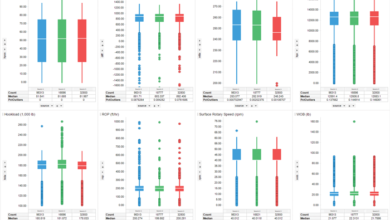Digital twins help to predict failures, create blueprint for ideal asset performance
By Kelli Ainsworth, Associate Editor
The concept of digital twins – a dynamic digital representation of an industrial asset – is increasingly being adopted in the drilling industry. At BHGE, digital twins are being used not only to understand the current state and condition of an asset but also to predict future maintenance issues and determine how issues can be avoided. “Digital twins combine our understanding of the physics of the equipment, as well as where the equipment is deployed – for example, reservoir location, morphology, etc – along with modern machine learning and artificial intelligence (AI) technologies,” said Dr Arun Subramaniyan, VP Data Science & Analytics at BHGE.
Digital twins are built by combining data from internet-connected equipment sensors with physics-based algorithms to build an exact digital copy of that specific piece of equipment. A digital twin of a larger system, like a plant, has also been built. No drilling rig digital twins have been created to date, however.
Digital twins are constantly updated with real-time data from the sensors, so it always accurately reflects the state and health of the real-life asset it represents. GE first began using digital twins more than five years ago in the aviation space. Across all of GE’s businesses, more than 500,000 digital twins have already been built, including more than 5,000 in the oil and gas industry. The company plans to develop thousands more digital twins this year, specifically in the upstream sector.
One example of a successful use of digital twin technology has been with BHGE’s gas turbines, which are used in LNG plants to compress gas. Bearing failures in these turbines was leading to significant and expensive operational disruptions. BHGE built digital twins of the turbines, which took into account how long the bearings were being operated and various operational conditions to predict their current condition. This enabled the company to predict potential bearing failures up to a month in advance, Dr Subramaniyan said. “The digital twin was also able to tell us how to change our operations so that we could prevent that failure long enough to allow the bearing to be replaced during scheduled maintenance.”
BHGE is currently building digital twins of wells, using its Predix industrial internet platform. Sensors within the wellbore itself, along with associated tools and equipment and reservoir models, will produce a picture of the state of the well, how the well is performing or producing and, for instance, how much power an electrical submersible pump (ESP) is using in that particular well. A well’s digital twin will also allow an operator to project how much oil will be produced if certain parameters, such as the ESP speed, are altered.
“The digital twin can be given an input like ESP speed, and I can ask it to tell me how much I can produce if I have a max power constraint of 75 hp,” Dr Subramaniyan said. “Or you can flip it and say I need to reduce my power consumption by 50%. Given that constraint, what is the maximum I can produce?” BHGE expects to roll out digital twins of wells this fall, deployed in its IntelliStream platform, which will target NPT reduction and production optimization in onshore operations.
Eventually, BHGE aims to expand this capability to cover an entire field, Mathias Schlecht, VP of Enterprise Technology, said. “The ultimate vision is to create the digital twin of a field,” he said. “That means taking the digital twin from the individual wells, looking into the complete understanding of the reservoir, the subsurface and formation, and combining information from multiple wells to predict how the field is going to produce.”
Digital twins are also a key component of GE Marine’s SeaStream Marine Asset Performance Management solution. This technology creates digital twins of major drilling and marine equipment – including the top drive, drawworks, thrusters and main engines – to detect equipment anomalies to provide early warnings for potential failures, as well as to avoid unnecessary maintenance. It can also create a blueprint of ideal asset and drilling performance and compare actual performance with the blueprint. Data collected and analyzed by SeaStream is presented on dashboards, providing an overview of the vessel’s performance.
In 2016, Maersk Drilling and GE Marine entered a partnership to pilot SeaStream on one of the contractor’s XLE rigs for 12 months. In July 2017, the companies agreed to extend the partnership and expand the scope by running SeaStream on nine of Maersk’s rigs.
The partnership is targeting 20% maintenance cost reduction and improvements in drilling efficiency. The project also includes developing digital twins of major drilling and marine equipment on Maersk’s rigs.





